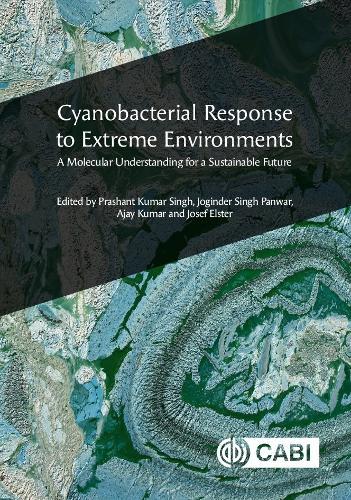Overview
Cyanobacteria are the oldest living organisms on Earth, going back to the Precambrian era and the planet's early harsh climate. Cyanobacteria inhabit almost all environmental niches. These prokaryotes were critical to the formation of the current biosphere as they evolved photosynthetic reactions emitting oxygen similar to those of plants and green algae. They continue to contribute to the equilibrium of the Earth's atmosphere by generating oxygen and eliminating carbon dioxide. In addition, heterocystous cyanobacteria (specialized nitrogen-fixing cells formed during nitrogen starvation) contribute to atmospheric nitrogen fixation. Therefore, cyanobacteria have tremendous potential for biotechnological applications. Cyanobacteria have evolved specific regulatory mechanisms to cope with environmental stresses and/or variable environments, such as high altitude, extreme cold, hot water and springs, and volcanic ash. However, cyanobacterial adaptation mechanisms to environmental extremes have been poorly addressed, despite their ubiquitous presence in such ecological extremes. Over the last decade, remarkable progress has been made to uncover cyanobacterial adaptation to various abiotic stresses such as high irradiance, nutritional deprivation, UV-B radiation, heat, cold, desiccation, heavy metals, and radiation. These studies must lead the way to a basic understanding of cyanobacterial gene regulatory pathways for morphological, physiological, metabolic, and genetic adaptations to environmental stress. Unfortunately, until now, this information has been scattered in the literature. This book reviews and provides an up-to-date snapshot of where current research stands, as well as discussing the different aspects of cyanobacterial adaptation to extreme environments and their potential for biotechnological exploitation and future research. This book is aimed at researchers and graduate students involved in any aspect of research into cyanobacteria, extreme environments and the exploitation of these organisms in biotechnological applications.
Full Product Details
Author: Dr Prashant Kumar Singh (Mizoram University, India) ,
Joginder Singh Panwar (Nagaland University, India) ,
Dr Ajay Kumar (Volcani Centre, Israel) ,
Dr Josef Elster
Publisher: CABI Publishing
Imprint: CABI Publishing
ISBN: 9781800623163
ISBN 10: 180062316
Pages: 272
Publication Date: 31 October 2025
Audience:
College/higher education
,
Professional and scholarly
,
Tertiary & Higher Education
,
Professional & Vocational
Format: Hardback
Publisher's Status: Forthcoming
Availability: Not yet available

This item is yet to be released. You can pre-order this item and we will dispatch it to you upon its release.
Author Information
Prashant Kumar Singh (Edited By) Dr Prashant Kumar Singh is currently working at the Department of Biotechnology, Mizoram University (A Central University), Pachhunga University College Campus, Aizawl, Mizoram. He completed his PhD degree from Banaras Hindu University, Varanasi, India. In his 15 years of research, he has published more than 100 articles and book chapters and four books. Joginder Singh Panwar (Edited By) Professor Joginder Singh Panwar is at the Department of Botany, Nagaland University, India Ajay Kumar (Edited By) Dr Ajay Kumar is currently working as visiting scientist in the Agriculture Research Organization, Volcani Centre, Rishon Leziyon, Ministry of Agriculture and Rural development Israel. Dr Kumar completed his doctoral research at Botany, Institute of Science, Banaras Hindu University, Varanasi, India. He has published more than seventy-five research papers, including research articles, review papers, and book chapters in leading International and National journals or books. He has a wide area of research experience, especially in Plant -Microbiome, Plant-Microbe Interactions, and microbe mediated environmental contamination management.



